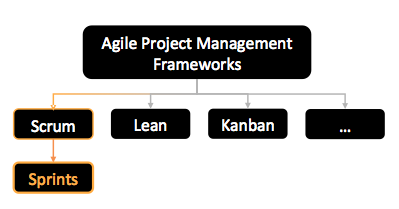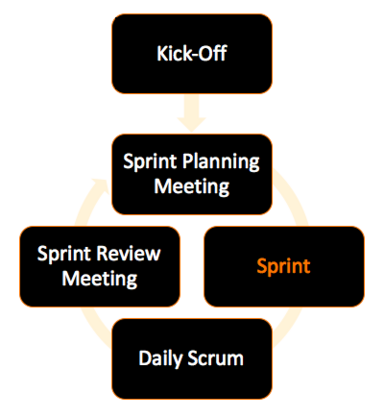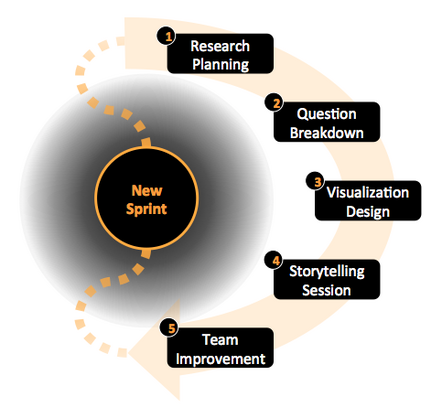The Sprint Methodology in Agile Project Management
Contents |
Abstract
Breaking down projects into smaller parts is paramount to being adaptive and agile as well as for maintaining the interest and momentum towards stakeholders [1]. Working in sprints facilitates a quick and continuous review of results allowing regular feedback and thereby keeping on the right path towards a successful project for all parties involved. This eventually also helps ensuring that the project continues being profitable, which can be critical towards the funding of the project [1]. This iterativeness thus challenges the traditional way of conducting projects, which is characterised by more robustness and formalities involving very thorough planning as well as the need for preliminary and formal management acceptance of the project and thereto funding [2].
This article investigates relevant aspects of the sprint methodology in agile project management.
First, the concept and purpose behind sprints is described, leading to the further description of the actual application of the method.
Second, even though sprints are challenging the traditional way of running projects where the latter can be insufficient in terms of flexibility and agility, there are also some limitations and risks involved with running projects in sprints. These limitations and risks are discussed taking offset in relevant and recent research results and material, which are questioning the risk management processes in agile project management [3].
Finally, relevant references for further reading are outlined allowing the reader to investigate the different matters further.
Sprints
Motivation
According to PRINCE 2, a project is "a temporary organization that is created for the purpose of delivering one or more business products according to an agreed Business Case." To deliver such business products, a project needs to be managed with respect to many aspects such as costs, timescales, quality, scope, risks and benefits. PRINCE 2 thus defines project management as "the planning, delegating, monitoring and control of all aspects of the project, and the motivation of those involved, to achieve the project objectives within the expected performance targets for time, cost, quality, scope, benefits and risks."
Projects go through a series of phases, also known as a project's life cycle. These phases can differ from project to project but are typically broken down by deliverables or milestones. Generically, the phases can, according to the PMBOK Guide, be summed down to the starting of the project, the organizing and preparing, the carrying out of project work and eventually the closing of the project.
In the traditional predictive life cycle, the products and projects' deliverables are clearly defined at the beginning with little room for changes in the scope of the project without needing careful managing. The project scope, costs and time are thus defined as early in the process as possible (PMBOK). This requires that a project is definable within all its aspects at an early stage and is characterised by low levels of change. However, some projects are characterised by such an amount of uncertainty that the early defining of aspects like project scope, cost and time simply is not possible. This is where agile project management (APM) and the adaptive life cycles become relevant (PMBOK).
Considering the rapid development in technology and globalization and especially digitilization trend (reference), running agile projects is even more critical especially within IT.
Scrum and Sprint Management
Adaptive life cycles are characterised by very rapid iterations of approximately 2-4 weeks and are fixed in time and costs. In the beginning of each of these iterations, the product backlog list, which is defined by the decomposition of the overall project scope, is reviewed in order to determine, which of the items can be delivered within the next iteration.
Within agile project management, there exists a large number of different frameworks that can be used. Three of the most frequently used ones, namely the scrum, lean and kanban frameworks, are illustrated on figure 1. This article focuses on how data science teams can apply the adaptive method called sprints to their projects, which is part of the APM framework called scrum. As mentioned, the scrum is one of the most frequently applied APM frameworks and was originally applied within IT projects but is now increasingly also applied within various other fields such as product development (scrum article).
The scrum consists of three major components: the roles, process and artifacts. The team working on the scrum is cross-functional and working full-time on the project. The scrum process counts five overall activities: the kickoff, the sprint planning meeting, the sprint, the daily Scrum, and the sprint review meeting.
Why sprints/scrum/agile?
- feedback loop - regular and continuous feedback - "fail fast" and gain value. Destroy unviable products and focus on the ones showing results
- fast developing technology, companies need to remain competitive and to do that they must be agile, easily adaptable and reacting fast to change
- working in sprints allow more agile projects making it easier to adapt to change
Application
In order to run scrums efficiently, it is necessary to manage sprints carefully. A way to ensure that the sprint is on track is to hold regular meetings. For data science teams it is recommended to run five different types of meetings during a sprint. These five meetings are as follows:
• Research Planning
• Question Breakdown
• Visualization Design
• Storytelling Session
• Team Improvement
The meetings are to be held in the same order for every sprint, as is illustrated in figure 2. These five types of meetings have different purposes and they all together ensure that every phase of a sprint is covered properly.
Starting with the first sprint meeting, namely the Research Planning meeting,
Explain each meeting type and purpose of them
Explain the relevance and use of Burndown charts (typical for sprints)


